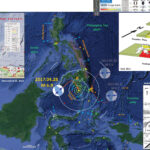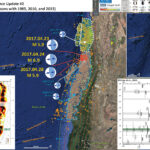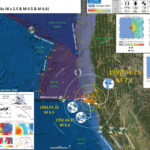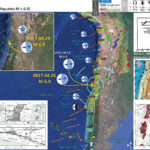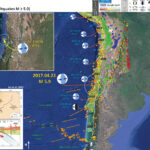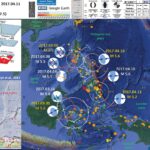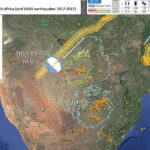Earlier in April (2017) there was some activity in 4 different regions of the Philippines. Based upon the low magnitudes and large epicentral distances, these earthquakes were most unlikely to be directly related to each other. A couple days ago,…
Earthquake Report: Chile Update #2
Today the swarm has reminded us to stay vigilant. This region of the Chile subduction zone is pretty active and adjacent to the most active part of the Chile subduction zone. Today there was a series of earthquakes with a…
Earthquake Report: 1992.04.25 M 7.2 Petrolia
The 25 April 1992 M 7.1 earthquake was a wake up call for many, like all large magnitude earthquakes are. I have some updated posters as of April 2021 (see below). Here is my personal story. I was driving my…
Earthquake Report: Chile Update #1
Well, I thought more to compare this ongoing earthquake sequence with the 1985 M 8.0 earthquake. This, in context with the 2010 and 2015 earthquakes. My initial report based upon the M ~4-5.9 swarm is here and my report on…
Earthquake Report: Chile!
Well, we had another earthquake in the region of a recent (yesterday and the day before) swarm offshore of Valparaiso, Chile (almost due west of Santiago, one of the largest cities in Chile). My previous report on the M 4-5…
Earthquake Report: Chile!
There have been a number of earthquakes along the subduction zone offshore of Chile. These have happened near the boundary of two Great Earthquakes from 2010 and 2015. This region may be a segment boundary along the subduction zone, albeit…
Earthquake Report: Philippines
I put these together earlier this week for my classes and finally have a moment to write about these earthquakes. The Philippines region has been quite active lately, as it frequently is. I show below a series of earthquakes from…
Earthquake Report: Botswana!
This is a very interesting M 6.5 earthquake, which was preceded by a probably unrelated M 5.2 earthquake. Last September, there was an M 5.7 earthquake in Tanzania along the western shores of Lake Victoria. Here is my report for…

